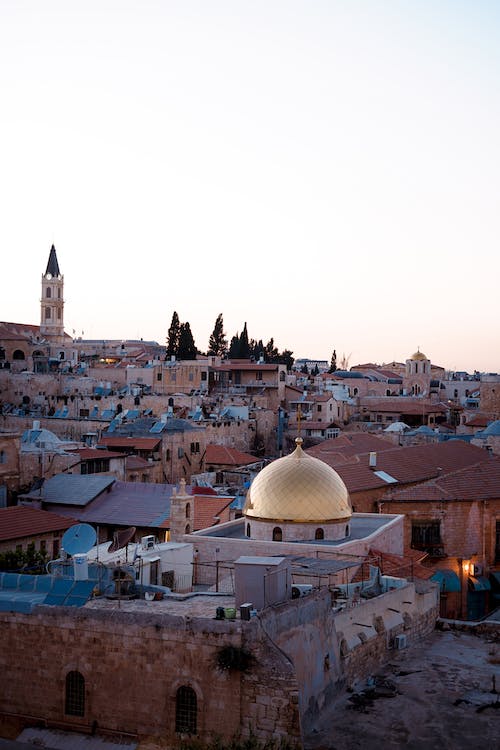The Mount of Olives (also called Mount Olivet) is referred to a mountain ridge located east of the Old City and gets its name from the olive groves that once proliferated the slopes.
Even without the olive trees, the Mount of Olives is still an important and meaningful landmark. Its significance dates back to the biblical times and it is important to both Jews and Christians.
History
Since the biblical times up to the present, the Mount of Olives has been used as a Jewish cemetery. Many of the most prominent Biblical kings are also buried in the Mount of Olives.
The Jews celebrated the Rosh Hodesh (or Rosh Chodesh) on the Mount of Olives during the days of the Second Temple. They also held many celebrations and ceremonies there. After the Second Temple was destroyed, the Jews celebrated the festival of Sukkot on the Mount of Olives. Many Jewish pilgrims traveled to Mount of Olives because it was 80 meters higher than the Temple Mount and offered a panoramic view of the Temple site.
During the Arab-Israeli War of 1948, an agreement was signed between Israel and Jordan to establish access to the Mount of Olives. But during the 19-year Jordanian annexation of the West Bank, Israelis (both Jewish and non-Jewish) as well as Jews from other countries were not permitted to enter Jordan, and therefore weren’t able to visit Mount of Olives. However, non-Israeli Christian pilgrims were allowed to visit the mount. During this period, when Jordan controlled the area, about 38,000 graves were destroyed and many burial locations were developed into roads.
It wasn’t until the Six-Day War during 1967 when Israel reclaimed the land and afterwards, a series of efforts were made to restore the Mount of Olives, and the cemetery became functional for burials once more.
Today, the Mount of Olives offers some of the best panoramic views of Jerusalem and is visited by both local and foreign tourists alike.
The views from the Mount of Olives are probably the most evocative of Jerusalem. From here you can see the Temple Mount with the Dome of the Rock & Al Aqsa Mosque, the Mount Zion, the Old & the New Cities. In the more immediate vicinity are the graves and the churches on the Mount of Olives itself. Exploring the Mount of Olives is one of the highlights of Jerusalem.
